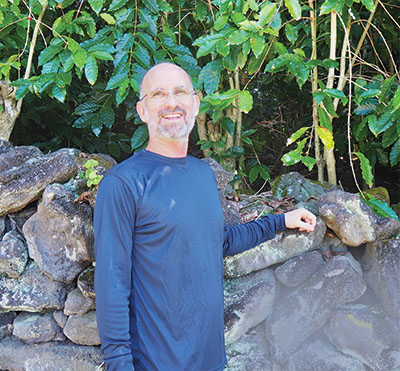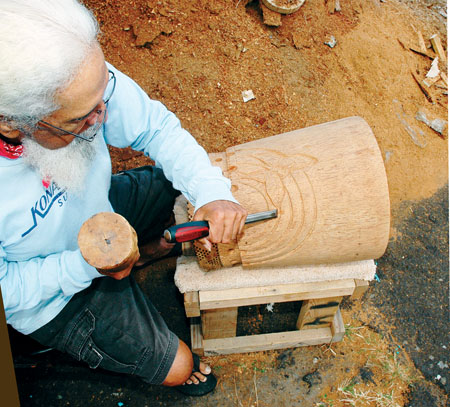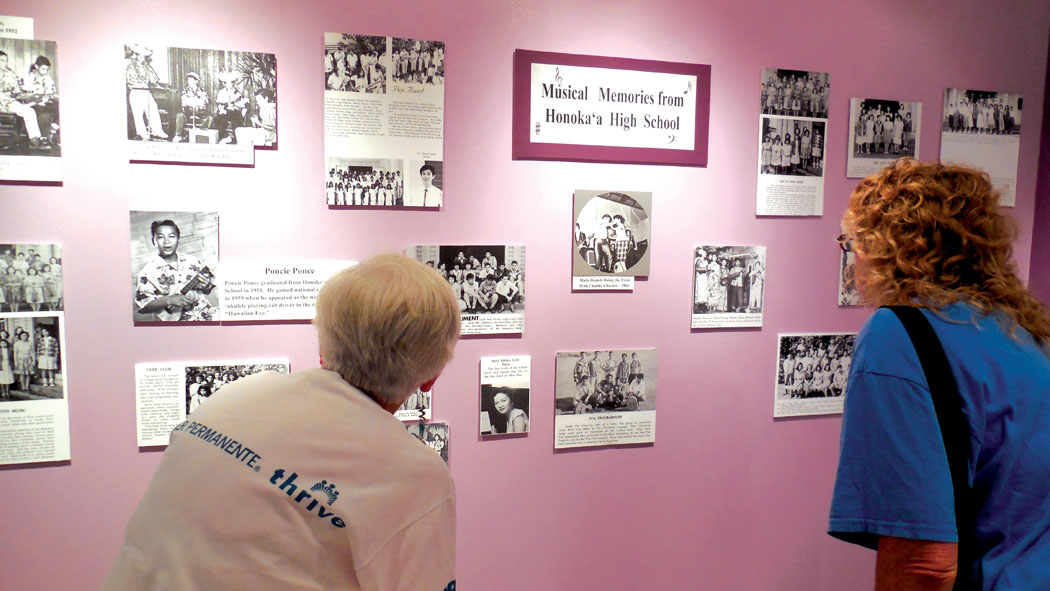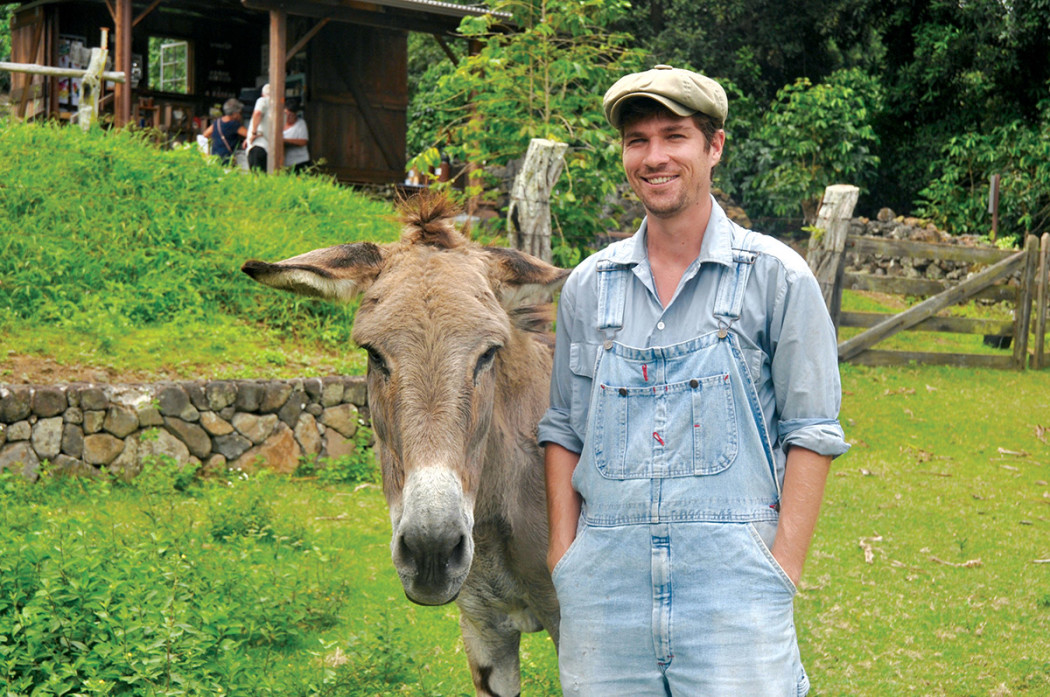
Hands On History: Relive the Life of Kona’s Coffee Pioneers
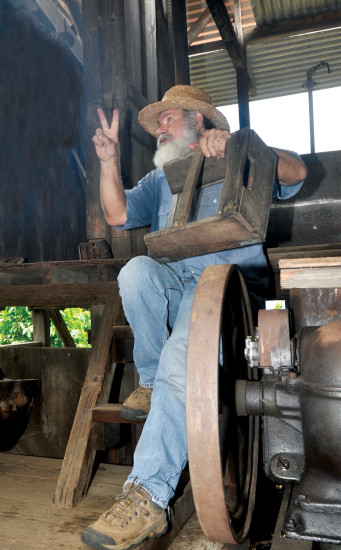
By Fern Gavelek
Step back in time to the 1920s–40s and relive the simple, yet arduous, life of Kona’s Japanese immigrant farmers during Hands On History at the Kona Coffee Living History Farm. It was a time when Kona farmers used donkeys to transport sun-dried coffee beans, bathed in a wood-heated furoba (bathhouse), and relied on their own garden for meal staples.
During the Hands On History program, the fun includes coffee roasting, medicinal herb gardening, calligraphy, Japanese pickling, lauhala weaving, mochi and tofu making, and also growing backyard groceries.
While at the farm, visitors also encounter costumed living history interpreters demonstrating routine farm tasks while sharing how local ingenuity transformed both the coffee farming process and the landscape upon which it happened.
Hands On History activities are authentically staged where they would have taken place on the farm. The 5.5-acre farm is equipped with a kuriba (1926 coffee processing mill), a hoshidana (coffee drying platform with a moveable roof), three themed gardens, two donkeys and their pasture, chicken coop, macadamia nut trees, and producing coffee land. The heart of the farm is the farmhouse, built and occupied by the Uchida family from 1925 to 1994. Stocked with period artifacts, the modest abode displays space for formal visits, sleeping, studying, cottage industries, and exterior structures including the furoba, and a benjo (outhouse).
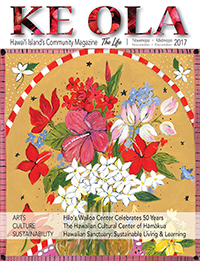
“Hands On History provides a unique opportunity for farm visitors to learn and practice traditional activities that were important to the daily lives of our Kona ancestors,” explains Gavin Miculka, Kona Historical Society (KHS) assistant program director and Kona Coffee Living History Farm museum manager.
An engaging program overseen by KHS, Hands On History is supported through a grant from the Hawai‘i Tourism Authority. Activities vary in length and duration during the two-hour program period.
During Backyard Groceries: Sustainability in the Kitchen Garden, presenter Joel Pearson of Hōlualoa started the 20-minute activity with a question: “What does sustainability mean?”
After a brief discussion emphasizing how the immigrants practiced self-sufficiency by using donkey dung to compost into fertilizer and growing plants for seeds, Joel chides, “You couldn’t hop in the car and drive over to Lowe’s for all your garden supplies.” He also explains how the farm’s chickens naturally stirred up the donkey dung, aerating it so it could readily decompose. “It’s ready when it doesn’t smell anymore,” he smiles, while producing a bucket full of the natural fertilizer for all to touch and sniff.
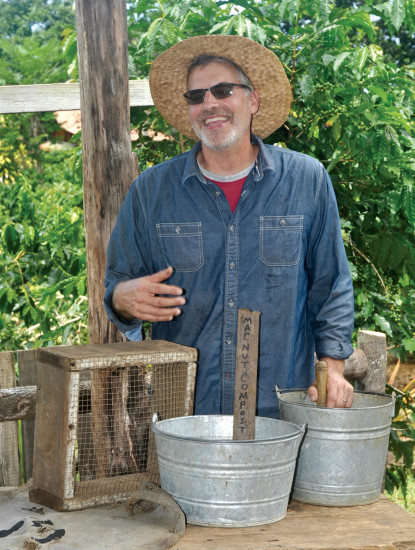
At the farm’s Market Garden, Joel shares typical 1920s garden tools and planting methods used on the farm. Pearson explained how comfrey is grown right outside the garden to keep the chickens happy so they stay out of the veggies. “It has medicinal value too as it can be used as an astringent and also is a chop-and-drop veggie to nourish the soil.”
The Market Garden is planted with food Japanese farmers sold off the back of their trucks. The truck crops included carrots, Swiss chard, mizuna (Japanese mustard), bok choy, white pineapple, green onions, and garlic chives. Participants are invited to go into the garden to sprinkle thirsty plants with a metal watering can and pick any harvest-ready veggies to be stowed in a woven basket.
Attendees also visit other farm plantings. The nearby Medicinal Garden contains tobacco, turmeric, culinary ginger, mamaki, non-flowering dandelion, and Japanese mugwort (yomogi). Along with the comfrey, these plants are used during the Hands on History activity called Home Grown Remedies: Kona’s Tradition of Medicinal Gardening.
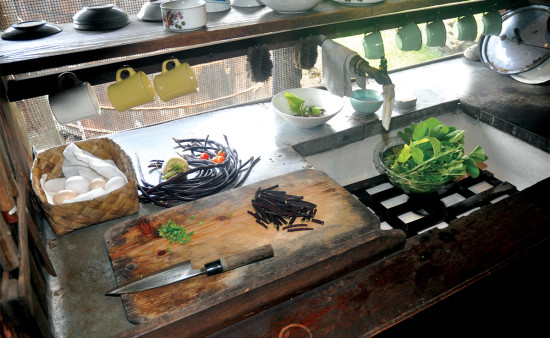
The House Garden, depicting the actual types of vegetables grown for family use, is full of lettuce, daikon, eggplant, turnips, cabbage, bok choy, purple long beans, peanuts, Swiss chard, Japanese taro, zuiki, and a favorite Japanese herb, shiso. Bounty from the House and Market Gardens is featured during Hands on History’s Balanced Bento: Pickles as a mainstay of the Japanese table.
“We try to truthfully represent life in the gardens from 1920–1945,” notes Joel, who has been involved with their planting for two years. “We try to do everything the way the Uchidas did, using the same resources they had.”
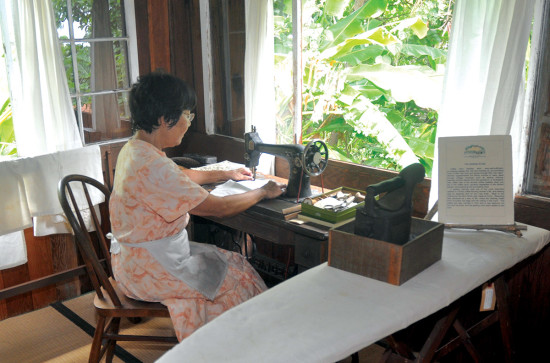
The farm and its activities are representative of the Japanese immigrant family farming experience. It was first homesteaded by Japanese in 1900. In 1913, the Uchidas took over the land’s coffee lease, which was owned by the Greenwell family. The Uchidas later built the farmhouse and worked on the farm with their five children. They lived on and leased the farm for 81 years before returning it to the late rancher and then KHS Board President Sherwood Greenwell. Later, KHS acquired the farm from Mr. Greenwell and the Living History Farm opened in 1999.
Pauline Nishida-Miller is one of the farmhouse interpreters and leads the bento pickling activity. She grew up on a Hōnaunau farm with a similar farmhouse and coffee processing equipment as the Uchidas. While Pauline was born shortly after 1945, she says the living history activities are familiar and she is content in the museum’s surroundings and artifacts.
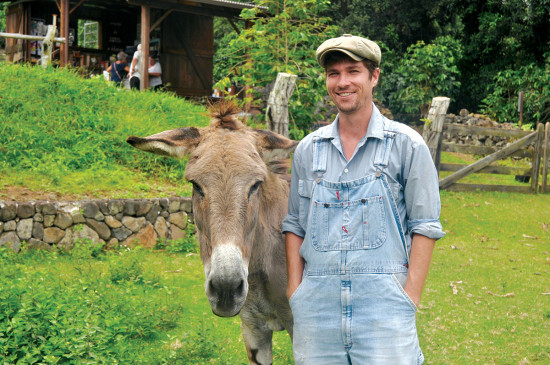
“I feel so wonderful about letting people know how life was back then,” Pauline shares. “That’s because the methods they used; there was no waste. There was lots of recycling and I think they did considerable planning regarding how to be self-sufficient. When I’m here, I’m practicing these methods and I love it.”
During the Hands On History pickling activity, Pauline says the Japanese farmers relied on simple techniques using salt and vinegar to preserve food for later enjoyment as there was no refrigeration. Food like cabbage, carrots, daikon, and eggplant “was salted and placed in a bowl with a weight on top, or the salt was massaged into the veggies to get the liquid out.” Then the brined veggies were rinsed, squeezed to remove liquid and put in a dish for eating, or stored in a covered crock for later use.
“When eaten, the pickled veggies were often flavored with a mixture of sugar and vinegar or soy sauce,” continues Pauline. “The goal was to get the liquid out so the harvested veggies lasted longer—about a week.”
During the pickling activity, Pauline demonstrates the process right in the farmhouse kitchen, where a large window provides light and rice may be cooking on the open hearth, enveloping the room in a rich, woodsy fragrance. When not leading the Hands on History activity, Pauline expertly guides visitors through the farmhouse, explaining the contents of rooms.

Retired carpenter and part-time coffee farmer Miki Izu of Hōnaunau shows visitors how to roast coffee in an open frying pan during Beans in the Skillet: Coffee Roasting at Home. The Hōnaunau resident has been leading the Hands On History activity for three years, but says he’s been involved with the museum since its inception.
“I grew up in a house just like that one” Miki says, pointing at the Uchida Farmhouse. Adeptly stirring the green coffee beans in the skillet, he details it takes about 15 minutes to achieve a lighter roast, which he prefers to better taste the flavors of coffee.
The coffee Miki roasts is grown and milled right on the farm, which produces 15,000 to 18,000 pounds of coffee cherries annually. Farm visitors can visit the pulping mill and drying platform where a costumed interpreter, like Jim Miller, explains the processing of coffee. Visitors can purchase and sample coffee at the on-site visitor station and store, which overlooks the pasture housing the farm’s donkeys, Mele and Charlie. Donkeys, which were nicknamed “Kona Nightingales” for their distinctive braying, provided the primary means of transportation in the early 20th century for hauling coffee.
While the farm’s goal is for visitors to step back in time to experience the daily life of Kona’s coffee pioneers, Gavin emphasizes the experience is more than that.
“People coming to visit are everyday people and the Hands On History activities help inspire them to realize their own stories are just as important to the American story,” he explains. “The farm illustrates the values of hard work, the importance of living sustainably, the value of education, the desire to face challenges head-on with ingenuity and innovation, and the commitment to family and community. These were important concepts for the coffee pioneers and are still important to people today—whether a broker in New York or a farmer in Idaho.” ❖
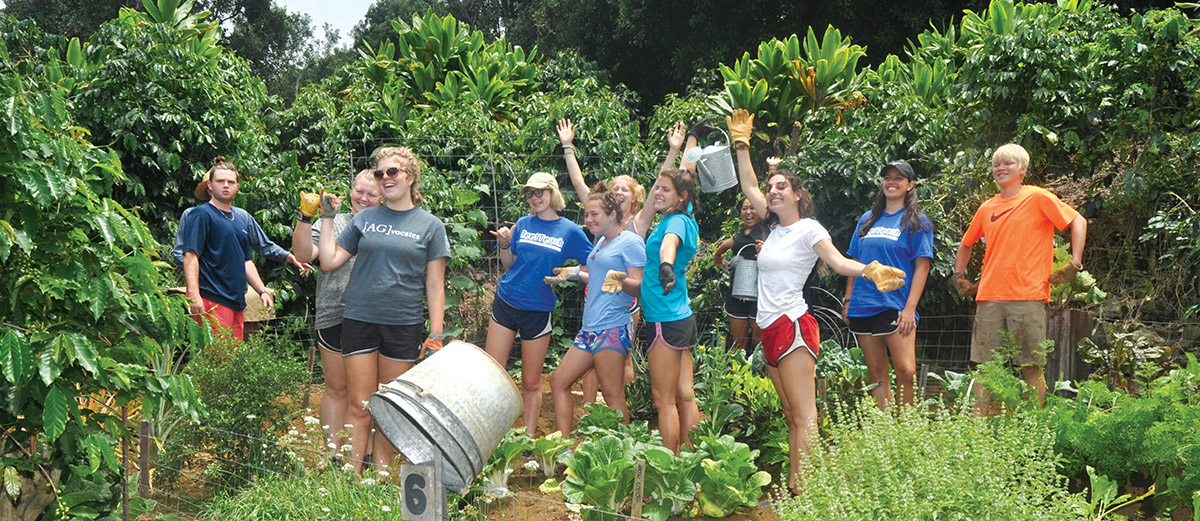
Kona Coffee Living History Farm
Open 10am–2pm weekdays, the farm is located at 82-6199 Māmalahoa Hwy., near MM 110, in Kealakekua. Hands On History activities vary every Wednesday and Friday, lasting from 11am–1pm. Participation in Hands On History is included in the price of a farm admission of $15; $13 for kama‘aina, military, 60-plus seniors; $9 college students with ID; $5 youth 7–17 and free for younger keiki and KHS members. The current schedule for Hands On History activities is posted at www.konahistorical.org and reservations are not necessary though special group tours are arranged through gavin@konahistorical.org.
Get Perking to Kona Coffee Festival
The 47th Kona Coffee Cultural Festival is November 3–12 with activities for all ages. During the festival, the Kona Coffee Living History Farm is open daily Nov. 3–10. Visitors with a coffee festival button are admitted for $10. Find the full schedule of java-jumping fun at http://konacoffeefest.com.
